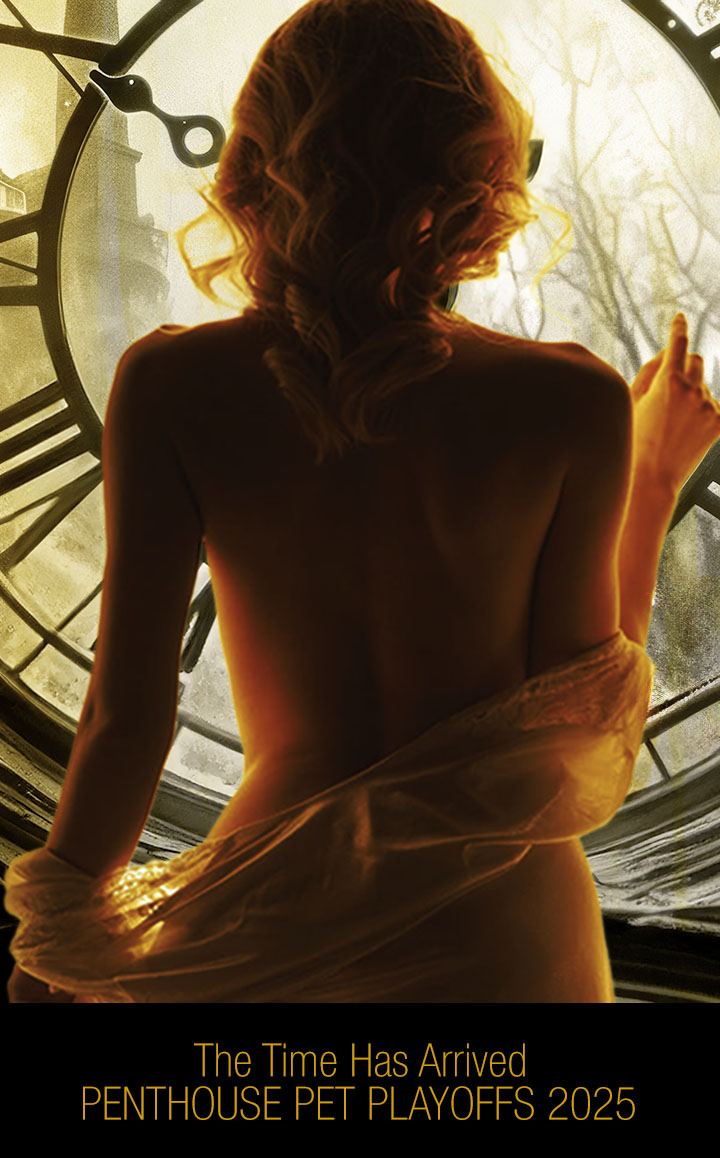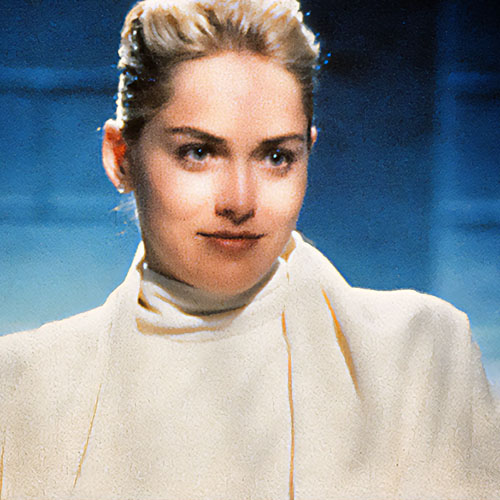Recut and restored, a legendary film returns thanks to a spectacular archival discovery.
Our Founder’s Erotic Film “Caligula” gets Rediscovered
Depending on the predisposition of the source, history remembers Bob Guccione either as an ostentatious creative spirit or a ruthlessly clever businessman — the reality probably lies somewhere in the middle. What’s certain is that the Penthouse magazine founder loved a challenge, loved exceeding expectations, and lived to push the envelope, weighing in via his publication on charged social and cultural issues, and highlighting the centrality of sex in human life.
A visual artist who painted, drew, and developed his own aesthetic as a photographer, Guccione inevitably turned his eye to Hollywood and moviemaking. His efforts began in the early 1970s, when the Penthouse company helped bankroll the horror film A Name for Evil and the counterculture drama The Dope Lawyer, while also partnering with Paramount Pictures to assist in financing The Longest Yard, The Day of the Locust, and Chinatown.
Meanwhile, producer Franco Rossellini and author Gore Vidal had begun collaborating on a film about the notorious Roman emperor Caligula, envisioned as a scathing commentary on power and corruption. Their quest for financing led them to Guccione, who saw in the political, brutal, and sexually charged subject matter an opportunity to make a truly revolutionary film.
Under his supervision, Guccione believed that Caligula could deliver a progressive cultural statement to a larger audience than was possible with a men’s magazine. His vision was bold and ambitious, and he was willing to invest heavily to pull off such a momentous undertaking.
“I promised to make a new kind of motion picture, one so innovative in its magnitude that it would fundamentally change the viewing habits of the theatergoing public,” Guccione said in promotional audio accompanying the movie’s release. He added, “If experiencing something that no one has ever felt before is as important to you as it is to me, I recommend that you see and experience Caligula.”
With a massive budget and starring four of England’s most respected actors (Malcolm McDowell, Helen Mirren, Peter O’Toole, and Sir John Gielgud), Caligula was Guccione’s attempt to fuse the scope and star power of a grand Hollywood historical drama with the excitement and audacity of pornographic film and the innovative sensibility of European art cinema.
Evaluated purely from a conceptual standpoint, the film can be said to faithfully
combine these elements. The creative result is less easily defended. Following an issue-plagued production, both Vidal and its Italian director, Tinto Brass, sued to remove their names from the film, and star Malcolm McDowell was publicly recommending that viewers skip the movie altogether. Audiences ignored his advice, and all the scandal only served to sell more tickets.
Released in America in February of 1980, Caligula was a box-office hit, but the reviews were universally brutal. Unfazed, Guccione delighted in the fact that, according to his calculations, by September, Caligula had earned a dazzling profit of $89 million from domestic and international sales.
Between the lawsuits and the production vitriol, it was public knowledge that the version shown in theaters strayed significantly from the visions of both Vidal and Brass. For this reason, cinephiles for years have dreamed of a better Caligula. The notion of a more artful and authoritative cut of the movie became a kind of mythical beast, with some fans carefully comparing releases from different countries and assessing edits through study of mere seconds of variant material, fueled by romantic notions based on behind-the-scenes photos of gorgeous, lost moments.
Guccione pushed conversations about the raw footage away as he proceeded into other arenas, and with each administrative regime change at Penthouse, knowledge of what had become of the materials diminished. The film world reasonably assumed the original footage never left Rome and had been destroyed long ago.
To understand the mystery surrounding the raw elements of Caligula, we have to return to the volatile end of its contentious production.
Shortly after filming was completed, Brass was shocked to find the locks changed at the studio and his editing bed outside in the snow. Meanwhile, Guccione secretly shot footage of Penthouse Pets engaging in hard-core sex in order to finish the film according to his vision.
Guccione had been sneaking the raw negatives out of Italy from mid-production onward, suggesting his plan to commandeer the film was long-gestating. Unlike in America, the Italian film industry prioritizes the rights of the director as a film’s “creator,” and Brass was successful in receiving an injunction against Guccione’s plan to complete the film without his input.
But by the time Brass won his victory in the Italian courts, all of the negatives had been moved to England. Guccione quickly turned to the British courts, who decided in Guccione’s favor, stating that any materials would not be returned to Italy until the settlement of any appeals.
After this temporary win, Guccione’s associates began relocating the negatives in an attempt to stay ahead of any seizure. (One of the first things I noticed when opening the film cans was that they were all recycled from earlier movies, with many of them bearing a confusing handwritten label of “My Son, My Son.” I learned later that this was deceptive coding meant to discourage any examination during transport.)
The legends surrounding the move of the original film materials ranged from Guccione claiming to have carried them all in suitcases (physically impossible) to the negatives being smuggled out of Italy wrapped around the legs of trusted couriers (even more impossible). The truth was far more mundane: Through a combination of palm-greasing and sleight-of-hand, the footage was spirited from England to New York City. Penthouse then reached a legal resolution with Franco Rossellini’s Italian production company, allowing Guccione to complete the film.
The 96 hours of raw footage, the location sound tapes, and other production material eventually made their way to Los Angeles, where for decades they sat in a film-storage facility gathering dust.
The timing of their rescue was nothing short of a miracle — credit for saving the cache goes to Ranjit Sandhu, the academic behind Caligula.org, who tipped off German researcher Alexander Tuschinski in 2018 to where the materials were stored. Tuschinski in turn notified Penthouse, whose new administration were shocked to learn the materials still existed. When the storage facility was contacted, it emerged that the entire collection was literally days away from permanent destruction for unpaid bills. If not for this eleventh-hour exchange, the Caligula footage would have been lost forever.
When the archives were opened, beneath the dust we discovered that the original camera negatives and location sound were in pristine condition, miraculously untouched by time.
While promoting Caligula during a 1980 Penthouse magazine interview, Guccione joked that Tinto Brass had shot enough footage to “make the original version of Ben-Hur about 50 times over.”
This prodigious collection of archival material contains countless goosebump moments. The most exciting aspect? In the rescued footage, McDowell and Mirren deliver breathtaking performances no one has seen for 40 years. Enabled by the unearthing of the original materials, and guided by the narrative of Vidal’s original shooting script and the vision of Tinto Brass, the recut Caligula can be viewed as the discovery of an entirely lost film starring two of the world’s most celebrated actors.
One unforgettable moment involves a scene in the Roman Senate. It exists in the original release, but what is most powerful happens after Guccione’s edit ends. The camera slowly pans up to Mirren as Caesonia, watching her emperor-husband unleash pandemonium upon the Senate. Caesonia looks on, pleased; she releases a coy giggle. As the scene continues, her mood shifts: with a glint in her eye she raises her chin dramatically, surveying the melee below like a satisfied goddess of chaos.
I hope you’ll be watching next autumn when this moment — and many more like it — are presented in Caligula MMXX.
Learn more about the 40th anniversary release of “Caligula” at caligulammxx.com.
You can see more on Caligula on these pages.



























What I would like to see is the hardcore scenes assembled into a classic porn movie.